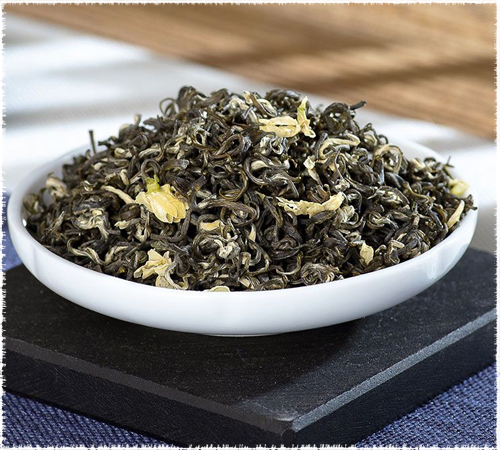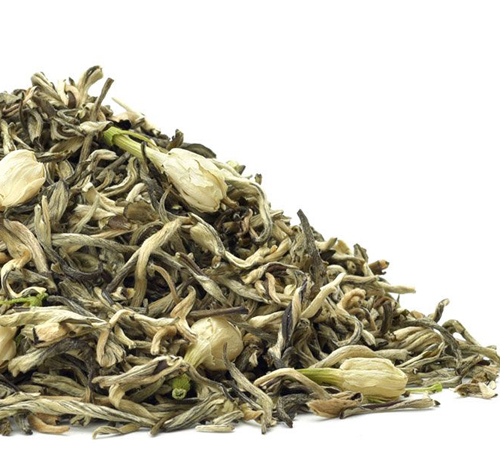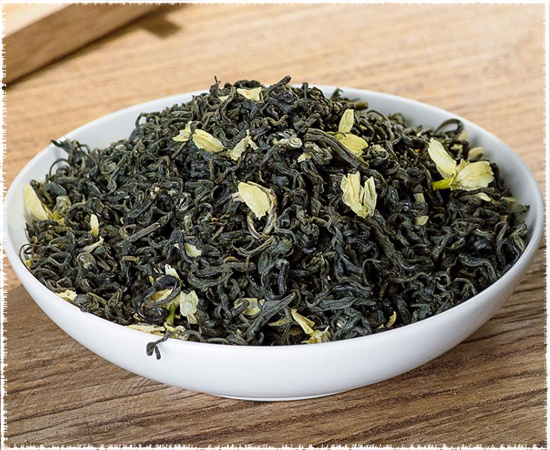Jasmine Tea is a common type of tea that is favored by most of tea lovers. It usually makes soothing and floral cup of tea that is often considered favorite tea among tea lovers. Generally, Jasmine Green tea is most often seen in market which use green tea as the tea base to be scented or mixed with Jasmine. Green tea has a delicate flavor that can be perfectly combined with floral notes of Jasmine. It is also true that green tea is best to well absorb the jasmine aroma. However, sometimes white tea, black tea and oolong tea are also used to make Jasmine tea.
The jasmine tea produced in different production areas and with different techniques will reveal different characteristics.
In this article I will show you the general knowledge of Jasmine Tea and compare the characteristics of different types of Teavivre Jasmines teas (loose leaf Jasmine Green Tea with jasmine petal, Jasmine dragon pearl) that are made from different areas with their unique characteristics. You will get more information which will make it simple for you to choose the best Jasmine Teas.
一 Main Production Areas and Characteristics of Jasmine
The main production areas of Jasmine are: Fuzhou of Fujian, Hengxian of Guangxi, Jianwei of Sichuan, Yuanjiang of Yunnan, Suzhou of Jiangsu, Jinhua of Zhejiang, etc.
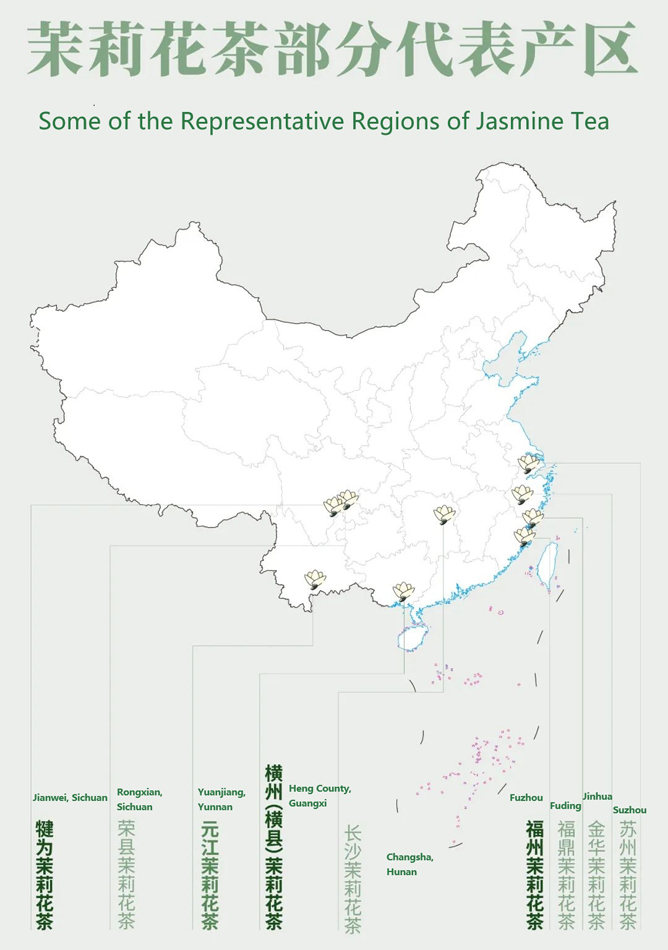
1. Jasmine from Fuzhou, Fujian
Fuzhou City in Fujian Province is the birthplace of Jasmine Tea. With a long history and mature techniques, the fragrances of both the tea leaves and jasmine flowers intermingle seamlessly. It has earned the reputation of being the “utmost flavor in jasmine refinement, ranking as the foremost fragrance in the mortal realm.” Jasmine Tea from Fuzhou is considered a premium product, requiring a minimum of four scenting processes.
Characteristics: Hongqing Green tea is used as the base, and through careful processing, it acquires a unique sugary-sweet flavor, often likened to crystallized sugar.

2. Jasmine from Heng County, Guangxi
It’s often said that “six of ten jasmine in the world come from Heng County in Guangxi.” According to the production volume, a significant portion of the jasmine tea available in the market hails from Heng County, Guangxi. It rightfully claims the title of being the largest global center for jasmine flower cultivation and jasmine tea processing.
Characteristics: Known for its competitive pricing, this region combines techniques from various places to offer diverse taste profiles based on specific preferences.
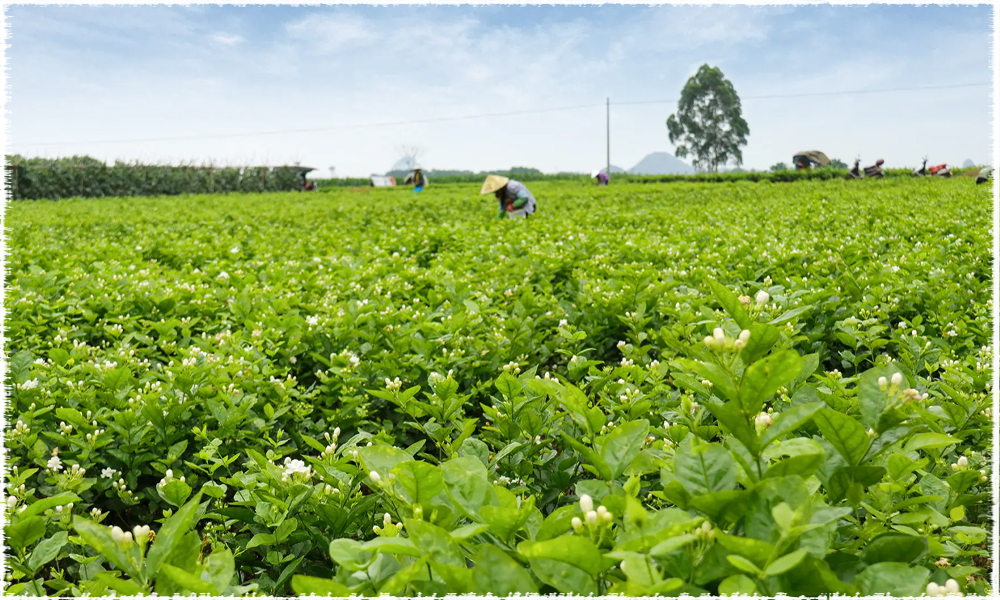
3. Jasmine from Sichuan
Compared to other jasmine cultivation regions, Sichuan’s Jasmine flowers have a short blossoming period and a lower yield in each harvest. Although this might seem like a drawback, it actually contributes to the unique strengths of Jasmine from Jianwei County in Sichuan Province. The distinctive features of Jianwei’s Jasmine include large flower buds, thick petals, and substantial flower weight.
Sichuan Jasmine Tea is distinguished by a special “stir-frying flower” technique that imparts a mature aroma. The tea integrates the essence of the flowers, resulting in a visually stunning brew, making it an excellent choice for those who appreciate aesthetics. The floral aroma doesn’t overpower the tea’s fragrance; instead, the two blend harmoniously, offering a fresh and layered taste experience.
Characteristics: Refreshingly fragrant and delicate, with a recognizable hint of “mature aroma.”
4. Jasmine from Yunnan
The jasmine flowers from Yuanjiang, Yunnan, are known for their early bloom, lengthy flowering period, and rich fragrance, making them a market favorite. The abundance of sunlight on the plateau, fertile red soil, and the unique low-heat valley climate of Yuanjiang collectively contribute to its early flowering. These blossoms can be picked as early as March, which is about two months earlier than in other significant jasmine-producing regions. Additionally, Yunnan jasmine is often processed into strong aromatic jasmine tea due to their intense fragrance.
Characteristics: Mild and smooth, with an outstanding ability to endure several infusions.
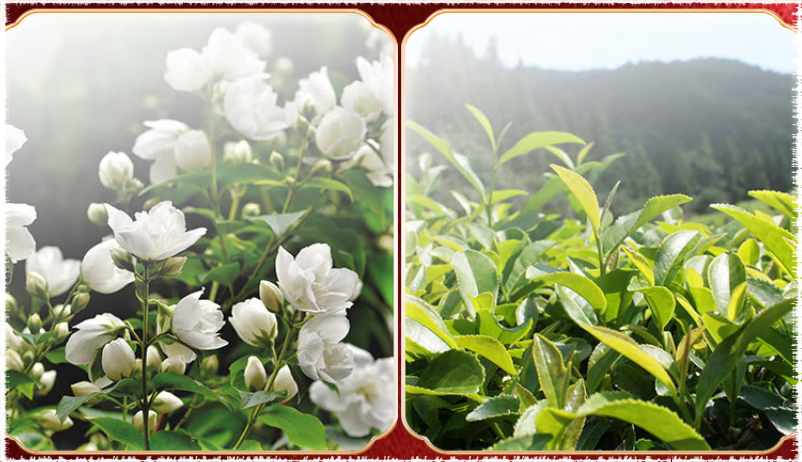
5. Jasmine from Suzhou
Suzhou, often referred to as the “City of Jasmine,” is a nationally renowned jasmine cultivation region. The summer and early autumn temperatures in Suzhou lead to plump, fully developed buds with a pristine white and glistening appearance. The aroma is intense, and the quality is exceptional. Therefore, jasmine tea from Suzhou is typically processed during these summer and autumn periods.
Characteristics: Compared to similar floral teas, Suzhou’s jasmine tea falls under the category of “refreshing fragrance.” The aroma is delicate, fresh, and vibrant, while the tea taste is mellow and infused with fragrance.
6. Jasmine from Jinhua
Also known as “Jinhua Flower Tea,” this jasmine variety is cultivated in Jinhua City, Zhejiang Province. As the foundation, premium green tea leaves are carefully paired with round, plump, immaculately white, lustrous, and fragrant premium jasmine flowers. The production process focuses on three crucial steps: capturing the blooming of fresh flowers, tea leaves absorbing the fragrance, and preserving the aroma through controlled heating.
Characteristics: The tea has a deep, rich jasmine aroma and a refreshing, sweet, and mellow taste.
二 Different Types of Jasmine Tea and Their Appearances
This part takes you on a journey through the nuances of two popular forms of jasmine teas: loose leaf jasmine green tea and the captivating dragon pearl jasmine tea. Additionally, we delve into the fascinating comparison between loose leaf jasmine tea with and without jasmine petals, unraveling the secrets behind their distinct profiles.
Loose Leaf Jasmine Green Tea
Loose Leaf Jasmine Green Tea is typically made by infusing green tea leaves with jasmine petals during the drying process. The petals are often removed after the scent has been absorbed, but some types of jasmine tea may still include the petals in the final product.
To make jasmine tea, freshly picked jasmine blossoms are often layered with tea leaves, allowing the tea leaves to absorb the fragrance of the jasmine petals. This process can be repeated several times to enhance the jasmine aroma.
Dragon Pearl Jasmine Green Tea
Jasmine Dragon Pearl tea features tightly rolled tea buds and tea leaves that resemble small pearls. Characteristics: This tea is renowned for its strong jasmine fragrance, and as it brews, the rolled leaves unfurl, releasing their aroma.
Is there Jasmine petal in Jasmine Green Tea?
Typically, after the scenting process, jasmine flowers that have lost their fragrance are sieved out and then the remaining tea is dried. Otherwise, jasmine flowers without their aroma will affect the taste.

There are also some varieties of jasmine tea where, after the scenting process, jasmine flowers that have lost their aroma are sieved out, and then fresh jasmine flowers are sprinkled onto the tea. The tea and jasmine flowers are then dried together. For example, in the case of “Bi Tan Piao Xue Jasmine Green Tea” “Jasmine Snow Bud (Mo Li Xue Ya) Green Tea” and “Jasmine Mao Feng Green Tea”, a few freshly dried jasmine flower petals will be added to decorate the jasmine tea.
Please note that this process ensures the tea retains the full aroma of jasmine flowers while removing those that have lost their fragrance.
三 Jasmine Green Teas in Teavivre
| Tea Picture | Tea Name | Origin of Tea | Origin of Jasmine | Scented Times | Tea Leaves | Taste Notes | Compare |
 |
Award Winning Superfine Jasmine Downy Dragon Pearls Green Tea | Fuding, Fujian | Heng County, Guangxi | Six Times | One bud and a few tender leaves | Jamine taste is well-balanced with tea taste, very pleasant sweetness, without bitterness even when brew long time. | Superfine grade is tender than the Premium one |
 |
Award Winning Premium Jasmine Dragon Pearls Green Tea | Fuding, Fujian | Heng County, Guangxi | Six Times | One bud and a few tender leaves | Jamine taste is well-balanced with tea taste, without bitterness even when brewing long time. | |
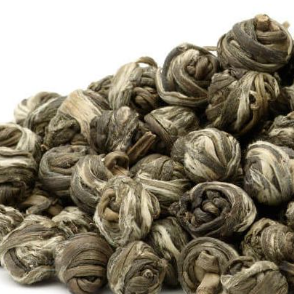 |
Jasmine Dragon Pearls Long Zhu Green Tea | Fuding, Fujian | Heng County, Guangxi | Five Times | One bud with one or two leaves | Soft and smooth, with prominent jasmine fragrance in the entrance, without bitterness even when brewing long time. | More Tea leaves than the Premium one |
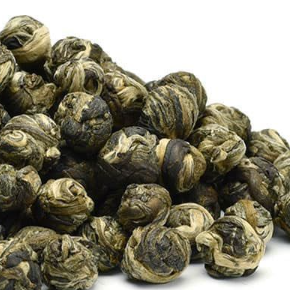 |
Jasmine Dragon Pearls Green Tea | Jinggu, Yunnan | Heng County, Guangxi | Three Times | One bud with one or two leaves | Stronger tea taste than other dragon pearls ones. | More Tea leaves than Long Zhu |
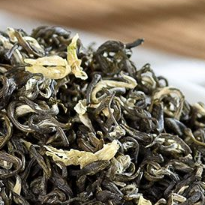 |
Bi Tan Piao Xue Jasmine Green Tea | Mengding, Sichuan | Yuxi, Yunnan | Seven Times | One bud with one leaf | with jasmine flower dancing up and down when brewing, taste fresh and sweet with rich jasmine aroma. | |
 |
Nu Er Huan (Daughter’s Ring) Jasmine Green Tea | Simao, Yunnan | Heng County, Guangxi | Six Times | Single tea buds | Strong jasmine and tea taste, Special ring-shaped single tea buds jasmine green tea | |
 |
Snail (Yu Luo) Jasmine Green Tea | Simao, Yunnan | Heng County, Guangxi | One bud with one leaf | Strong jasmine and tea taste, will get bitter if brewing long time | ||
 |
Jasmine Mao Feng Green Tea | Yibin, Sichuan | Heng County, Guangxi | Strong jasmine and tea taste | |||
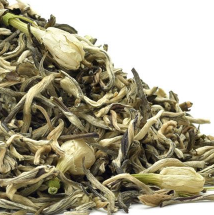 |
Jasmine Snow Bud (Mo Li Xue Ya) Green Tea | Simao, Yunnan | Heng County, Guangxi | One bud with one leaf | Strong jasmine and tea taste, will get bitter if brewing long time | ||
 |
Silver Jasmine Green Tea (Mo Li Yin Hao) | Fuding, Fujian | Heng County, Guangxi | Bud with two or three leaves | Strong jasmine and tea taste, will get bitter if brewing long time | Entry-level jasmine green tea, Cost-effective for daily drinking | |
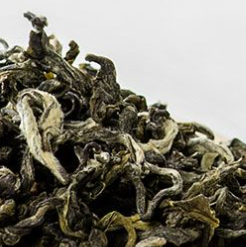 |
Jasmine Bi Luo Chun Green Tea | Fuding, Fujian | Heng County, Guangxi | Bud with one or two leaves | Strong jasmine and tea taste, will get bitter if brewing long time | Entry-level jasmine green tea, Cost-effective for daily drinking |
 Exploring the Charms of 2024 Spring Tea Garden with Angel
Exploring the Charms of 2024 Spring Tea Garden with Angel Yingde Black Tea
Yingde Black Tea Matcha vs. Green Tea Powder
Matcha vs. Green Tea Powder
